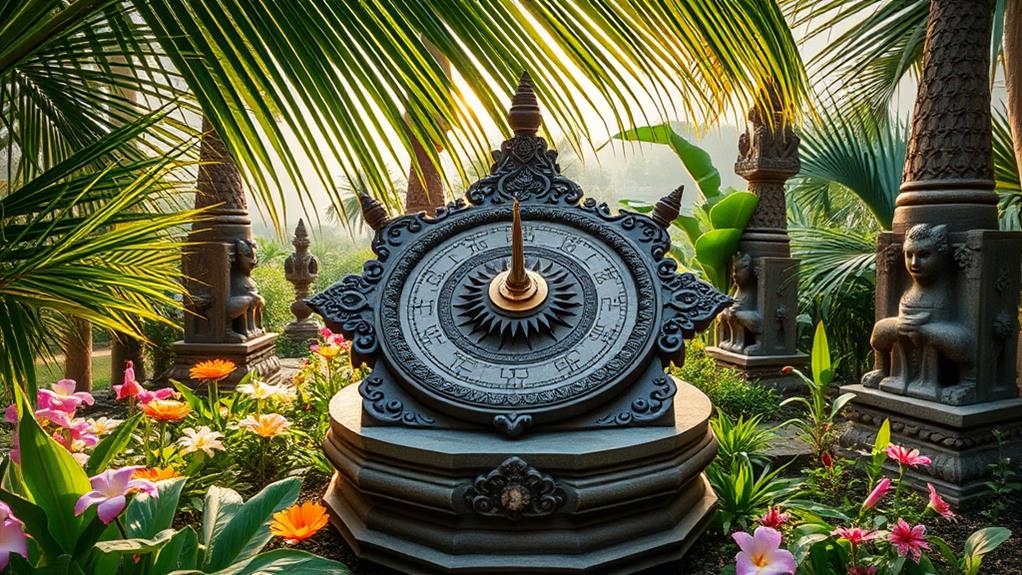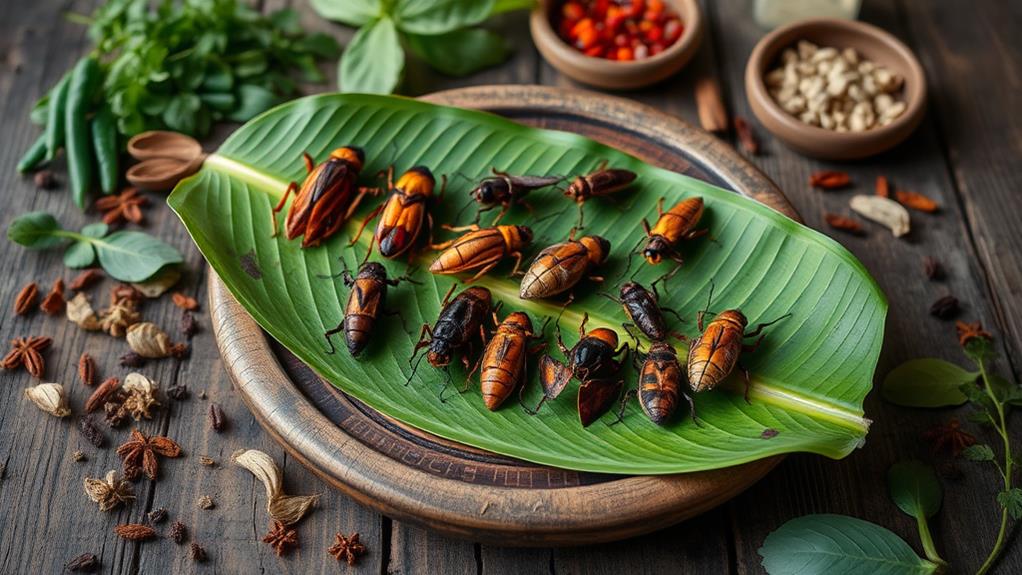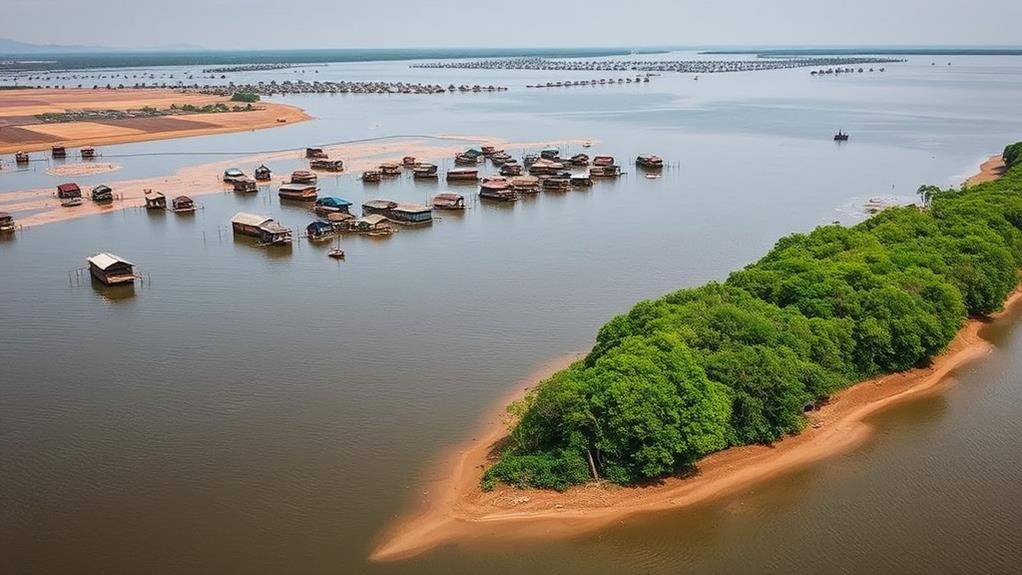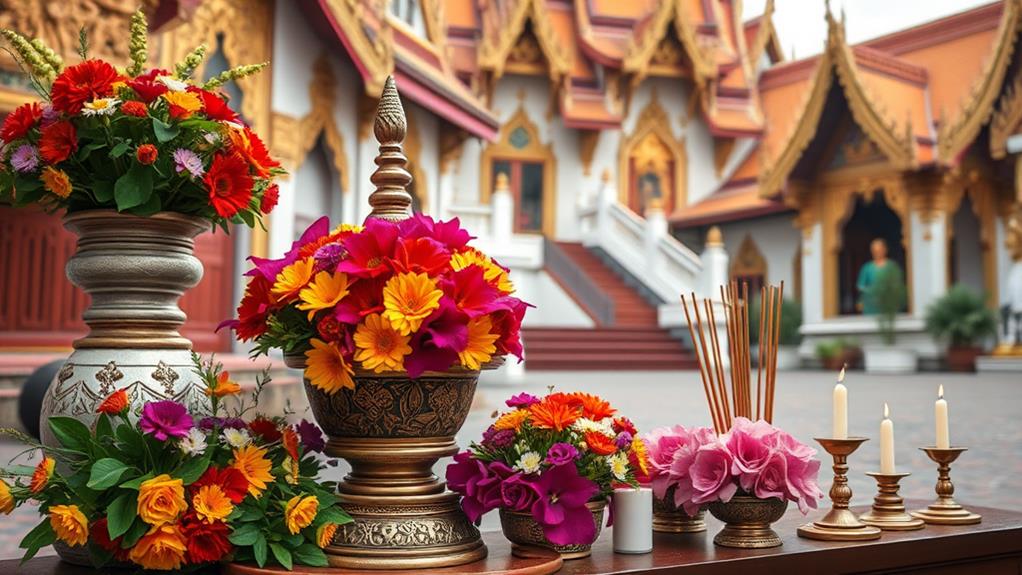Interesting Facts About Cambodia You Never Knew
Cambodia's rich history and unique culture offer a treasure trove of fascinating facts. You'll be amazed by the ancient Khmer Empire's lasting impact, visible in the awe-inspiring Angkor Wat complex and sophisticated irrigation systems. The country's culinary scene might surprise you with its edible insects, offering adventurous foodies a protein-packed treat. Tonle Sap Lake's remarkable seasonal changes create a diverse ecosystem, supporting floating villages and traditional fishing practices. Cambodia's wedding celebrations last three days, while funerals can extend up to 49 days, showcasing the depth of cultural traditions. These intriguing aspects only scratch the surface of Cambodia's hidden depths.
This post may contain affiliate links. If you make a purchase through these links, I may earn a commission at no additional cost to you. Additionally, portions of this post may be generated using artificial intelligence (AI) technology. While we strive for accuracy, please be aware that AI-generated content may not always be perfect and should be fact-checked when necessary.
The Spatula Scoops
- Angkor Wat, initially a Hindu temple, is the world's largest religious structure and a UNESCO World Heritage site.
- Edible insects like crickets and tarantulas are popular, nutritious foods in Cambodian cuisine.
- Tonle Sap Lake experiences a unique flow reversal twice yearly, expanding from 3,000 to 10,000 square kilometers.
- Traditional Cambodian weddings last three days and involve elaborate rituals and community participation.
- Cambodian funerals can last up to 49 days, reflecting deep respect for ancestral connections.
Ancient Khmer Empire's Lasting Legacy

The ancient Khmer Empire's shadow looms large over modern Cambodia. You might not realize it, but this empire, founded in 802 AD by Jayavarman II, has profoundly shaped Cambodian culture and architecture. The most iconic example of its architectural achievements is Angkor Wat, the world's largest religious structure. Originally built as a Hindu temple in the 12th century, it later became a Buddhist site. Today, it's a UNESCO World Heritage site, drawing millions of visitors annually.
But the Khmer Empire's legacy extends beyond grand temples. They developed sophisticated irrigation systems that revolutionized wet rice cultivation, a practice still essential to Cambodia's agriculture. The empire also gave birth to the Khmer script, adapted from the Pallava script. This writing system, with its oldest known inscription dating back to 611 AD, remains a significant element of Cambodian cultural identity.
As you explore Cambodia, you'll encounter these lasting impacts of the Khmer Empire at every turn. From the awe-inspiring temples to the enduring agricultural practices and the distinctive script, the empire's influence continues to shape the nation's identity and attract global attention.
Unique Cambodian Time-Keeping Traditions

Time takes on a unique dimension in Cambodia, where traditional practices and cultural perspectives shape how people mark their age and celebrate milestones. In this Southeast Asian nation, you'll find a fascinating approach to age and time that differs markedly from Western customs.
- Traditional age counting starts at one year old
- Birthdays often focus on spiritual practices
- The Khmer calendar influences agricultural activities
- Flexible schedules are common in Cambodian culture
When you visit Cambodia, you'll notice that people consider themselves a year older than their Western counterparts due to the traditional age counting system. This practice, deeply rooted in Khmer culture, means that a newborn is already considered one year old. Birthdays, while not widely celebrated, take on a more spiritual significance when observed. Instead of elaborate parties, Cambodians often share food with loved ones and engage in religious rituals.
The Khmer calendar, a lunisolar system, plays a vital role in timing agricultural activities and festivities. This unique approach to timekeeping extends to daily life, where you'll find that schedules are often flexible, and events may start later than planned. Understanding these time-related customs will enhance your experience of Cambodian culture and help you navigate social interactions more effectively.
Culinary Adventures With Edible Insects

You'll encounter a variety of edible insects in Cambodia, including crickets, silk worms, and tarantulas, each prepared using unique cooking methods. These insects aren't just novelty items; they're packed with protein and other nutrients, making them a valuable part of the local diet. Whether you're browsing street food markets or traditional restaurants, you'll find these insects incorporated into dishes that showcase Cambodia's culinary creativity and resourcefulness.
Popular Edible Insect Species
For adventurous foodies seeking unique culinary experiences, Cambodia offers a fascinating array of edible insects. You'll find popular species like deep-fried tarantulas, crickets, and silk worms widely available in local markets. These insects aren't just novelty items; they're considered delicacies and nutritious snacks packed with protein.
If you're feeling brave, try these Cambodian specialties:
- Crunchy, seasoned whole tarantulas
- Savory, spiced fried crickets
- Soft, steamed or boiled silk worms
- Unique insect-based dishes in local restaurants
Tarantulas are typically served whole, offering a distinctive crunchy texture. You'll find crickets prepared by frying and seasoning, providing a savory taste that might surprise you. Silk worms, often steamed or boiled, offer a softer texture and mild flavor.
Entomophagy, the practice of eating insects, is gaining popularity in Cambodia. It's not just about cultural significance; it's also about sustainability in food production. As you explore Cambodia's culinary scene, you'll discover that these edible insects are more than just a novelty – they're an integral part of the country's gastronomic landscape and a potential solution for sustainable protein sources.
Preparation and Cooking Methods
Numerous traditional Cambodian cooking methods transform edible insects into delectable treats. You'll find that frying and roasting are the most common techniques used by Cambodians to prepare these protein-rich morsels. These methods not only enhance the natural flavors of the insects but also create a satisfying crunchy texture that's become a hallmark of this unique cuisine.
When you visit Cambodia, you'll notice street food vendors offering a variety of insect-based dishes. They often season their creations with spices and herbs, adding depth to the flavors. A prime example is the deep-fried tarantula, a popular crunchy snack in Skuon that's typically served with a blend of aromatic seasonings.
As part of the local diet, insects like crickets, silkworms, and tarantulas are prepared to maximize their nutritional value while catering to local tastes. This culinary practice not only provides sustainable nutrition but also supports local economies. Vendors across Cambodia's markets offer these delicacies, allowing both locals and tourists to experience this fascinating aspect of Cambodian food culture firsthand.
Nutritional Benefits Explored
Nutritional powerhouses, edible insects in Cambodia offer a wealth of health benefits. As a rich source of protein, they provide more nutrients than traditional meats, making them an excellent nutritional alternative. You'll find that these crunchy critters, often featured in Cambodian cuisine, aren't just tasty but also packed with essential vitamins and minerals.
Here's why you should consider trying edible insects:
- They're a sustainable food source
- They help address food insecurity issues
- They're environmentally friendly to farm
- They offer unique flavors and culinary experiences
When you bite into a deep-fried tarantula or munch on some seasoned crickets, you're not just being adventurous – you're also supporting a more sustainable food system. Insects require less land, water, and feed compared to conventional livestock, making them an environmentally friendly choice. Plus, they're widely available throughout Cambodia, helping to alleviate food insecurity issues.
Angkor Wat's Architectural Marvel

Standing as a tribute to Cambodia's rich cultural heritage, Angkor Wat is an architectural marvel that continues to captivate visitors from around the world. As you explore this massive religious structure, you'll be walking through the largest of its kind on Earth, covering an astounding 1,626,000 square meters. Originally built as a Hindu temple dedicated to Vishnu, it later transformed into a Buddhist temple, reflecting Cambodia's religious evolution.
You'll be amazed by the classical Khmer architecture, featuring intricate bas-reliefs and a layout symbolizing the universe. With over 5,000 sculptures and carvings depicting Hindu mythology, Angkor Wat showcases the artistic mastery of the Khmer Empire. This UNESCO World Heritage site, designated in 1992, isn't just a reflection of Cambodia's cultural significance; it's also a cornerstone of the country's tourism industry.
As you wander through the complex, you'll be surrounded by centuries of history and craftsmanship. The sheer scale and detail of Angkor Wat make it a must-see destination, offering you a glimpse into Cambodia's rich past and its enduring influence on the present.
Tonle Sap's Remarkable Seasonal Changes

You'll be amazed by Tonle Sap's unique reverse flow phenomenon, where the Mekong River pushes water into the lake during monsoon season, dramatically expanding its size. This UNESCO Biosphere Reserve is a biodiversity hotspot, teeming with diverse fish species and endangered wildlife like the Irrawaddy dolphin. The lake's seasonal changes have shaped the lives of local fishing communities, who've adapted their homes and livelihoods to the ebb and flow of this remarkable ecosystem.
Reverse Flow Phenomenon
At the heart of Cambodia lies a natural wonder that defies conventional hydrology. Tonle Sap Lake, the largest freshwater lake in Southeast Asia, undergoes a remarkable seasonal flow reversal. This unique phenomenon occurs twice a year, driven by monsoon rains and the Mekong River's flooding patterns. You'll be amazed by the lake's dramatic transformation:
- Expands from 3,000 to over 10,000 square kilometers during the rainy season
- Supports a rich biodiversity of fish species and wildlife
- Directly impacts local fishing and agricultural practices
- Recognized as a UNESCO Biosphere Reserve for its ecological importance
During the wet season, the lake swells to more than three times its dry season size, creating a vast ecosystem teeming with life. This expansion provides essential habitats for numerous species and sustains the livelihoods of surrounding communities. As the seasons change, the lake's waters reverse direction, flowing back into the Mekong River. This natural cycle has earned Tonle Sap international recognition and highlights the need for sustainable management practices. The lake's seasonal changes not only showcase nature's incredible adaptability but also underscore the delicate balance between human activities and ecological preservation in Cambodia.
Biodiversity Hotspot
While Tonle Sap's flow reversal is impressive, its role as a biodiversity hotspot is equally remarkable. You'll find that this UNESCO biosphere reserve is teeming with life, making it one of Southeast Asia's most important ecosystems. The lake's unique seasonal changes create diverse habitats that support a wide array of species, from fish to birds and mammals.
Tonle Sap Lake's biodiversity isn't just ecologically significant; it's also crucial for the local communities. The lake's rich ecosystem provides sustenance and economic opportunities for those living in the area. You'll see this reflected in the floating villages, where residents have adapted their lifestyles to the lake's rhythms.
Here's a breakdown of Tonle Sap's ecological importance:
| Aspect | Wet Season | Dry Season |
|---|---|---|
| Lake Size | 10,000 km² | 3,000 km² |
| Biodiversity | High | Concentrated |
| Fish Species | Abundant | Diverse |
| Community Impact | Fishing-focused | Varied activities |
| Cultural Significance | High | High |
As you can see, Tonle Sap's seasonal changes dramatically impact its ecosystem and the communities that depend on it. This freshwater lake's role in Cambodian culture and biodiversity conservation can't be overstated.
Fishing Community Adaptations
Tonle Sap's remarkable seasonal changes don't just impact its biodiversity; they've shaped the lives of the fishing communities that call this lake home. You'll find these adaptable communities thriving in floating villages, their livelihoods intimately tied to the lake's ecological rhythms.
Here's what makes Tonle Sap's fishing communities unique:
- They adjust their fishing practices to target different species throughout the year
- Families live in houses that rise and fall with the changing water levels
- Traditional methods are used to navigate the expanding and contracting lake
- Seasonal festivals celebrate the lake's abundance and cultural significance
During the wet season, when Tonle Sap Lake swells from 3,000 to over 10,000 square kilometers, you'll see fishing activities intensify. The lake's biodiversity explodes, and fishermen seize the opportunity to catch migrating species like the giant catfish. As the seasons shift, so do the techniques and target species, showcasing the communities' deep understanding of the lake's cycles. This intricate dance between humans and nature has been perfected over generations, allowing these resilient communities to thrive in an ever-changing environment. Their ability to adapt is a reflection of the enduring relationship between Tonle Sap Lake and its inhabitants.
What Unique Cultural or Historical Traits Do Hungary and Cambodia Share?
Hungary and Cambodia share rich cultural and historical legacies rooted in their ancient civilizations. Both nations value traditional music, dance, and architecture, showcasing their deep artistic heritage. For those exploring hungary interesting facts, its medieval castles contrast beautifully with Cambodia’s awe-inspiring Angkor Wat, yet both stand as testaments to unique historical brilliance.
Peculiar Wedding and Funeral Customs

Cambodia's wedding and funeral customs offer a fascinating glimpse into the country's rich cultural tapestry. You'll find that Cambodian weddings are elaborate affairs, typically lasting three days and involving a series of traditional rituals. These ceremonies emphasize community participation, with large gatherings of family and friends celebrating amidst vibrant decorations and intricate ceremonial attire. During the wedding, you might witness the bride and groom receiving blessings from monks, highlighting the intertwining of religion and culture in Cambodian life.
On the other hand, Cambodian funerals present a stark contrast. These somber events can extend up to 49 days of mourning, reflecting the deep respect for ancestral connections in Khmer traditions. You'll notice unique rituals, such as offerings to ancestral spirits, which underscore the importance of honoring the deceased. However, these customs come at a significant cost, with the average Cambodian funeral costing around USD 9,000. This financial burden often weighs heavily on families, demonstrating the lengths to which Cambodians go to uphold their cultural practices and pay respects to their departed loved ones.
Frequently Asked Questions
What Are 5 Interesting Facts About Cambodia?
You'll be fascinated to learn that Cambodia's Angkor Wat is the world's largest religious monument, originally Hindu but later Buddhist. The country's flag uniquely features this iconic temple. Surprisingly, about half of Cambodia's population is under 15, a demographic result of the Khmer Rouge era. With over 4,000 temples, Cambodia's rich history attracts millions of tourists annually. Finally, you might be intrigued by Cambodia's culinary culture, which includes unusual delicacies like deep-fried tarantulas and various insects.
Why Is Cambodia so Famous?
You'd think Cambodia's fame comes from its deep-fried tarantulas, but it's actually much more than that. You'll find Cambodia's renowned for Angkor Wat, the world's largest religious monument. It's so significant, it's even on their flag! You'll also hear about the Tonle Sap Lake, Southeast Asia's largest freshwater lake. Cambodia's rich cultural heritage, youthful population, and unique street food scene all contribute to its fame. It's a country that's captured the world's attention for various reasons.
What Is the Darkest History of Cambodia?
The darkest period in Cambodia's history is unquestionably the Khmer Rouge regime from 1975 to 1979. You'll find that during this time, Pol Pot's government committed genocide, resulting in the deaths of an estimated 1.5 to 2 million Cambodians—about 30% of the population. They carried out mass executions, forced labor, and starvation. The aftermath left Cambodia with a dramatically altered demographic structure and a legacy of trauma that continues to impact the nation today.
What Is Cambodia's Biggest Problem?
You'll find that Cambodia's biggest problem is its extensive landmine contamination. With an estimated 4-6 million active landmines still in rural areas, it's a deadly legacy of the Khmer Rouge era. These hidden dangers cause about 30 casualties annually, hindering development and safety in affected communities. Beyond the immediate risk, landmines restrict land use for agriculture and infrastructure, impacting economic growth. This issue continues to pose significant challenges for Cambodia's progress and the well-being of its citizens.





